#Film Essay
Text
Obsessed with the fact that Brokeback Mountain is trending! I might post excerpts of my fave college essay dissecting that film if anyone wants to read that? 👀
It's called Toxic Masculinity & Compulsory Heterosexuality: The Real Villain of Brokeback Moutain
Edit (as of 12th Nov): Part 1 has been posted here!
147 notes
·
View notes
Text
I wrote an essay. It s about a movie, and it’s about how the world falls apart. If you’re a millennial traumatized by the financial crisis or if you’re interested in finance, you might like it.
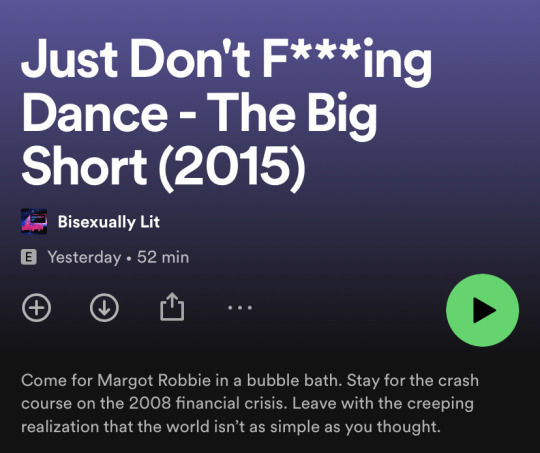
I’m gonna blaze this post bc this is the first thing I’ve published in years that was just me, so I’m hoping people check it out.
#movies#film#film analysis#the big short#finance#podcast#film essay#audio essay#anyway I’m proud of it#Spotify
89 notes
·
View notes
Text
My DCCU: Character Essay - Mr. Mxyzptlk
So...did you see the last episode of MAWS?
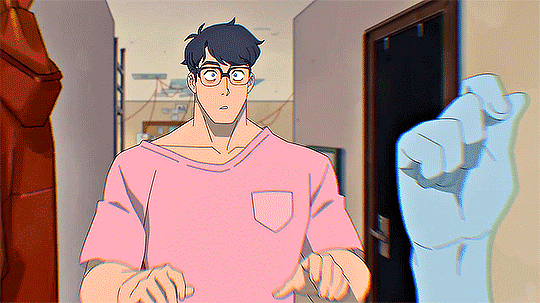
I just wrote an essay discussing this series, and without making you read that (although here it is if you wanna), let's just say I love almost everything about it, but the villains have me...nervous. Which, yeah, not exactly a unique take on the series, critically speaking. It is, in fact, the most common refrain about the series amongst Superman fans.

Now, since then, to be fair, we've gotten some very promising characters make their debut, or becoming more prominent. Task Force X - which includes Amanda Waller, the General (who's gotta be Sam Lane, but may also take some inspiration from Wade Eiling; time'll tell on that one, though), and a very cool super-armored version of Deathstroke - are our main antagonists, and I'm excited to see what comes out of them. Their former associates, power couple Brain and Monseiur Mallah (who are also gay in the comics, if you didn't know) are a more sympathetic turn on the characters, but quite satisfying in this form.
But no, there's only one real reason I'm making this post. And that is of course, the villain featured in the most recent episode, as of me writing this post. He's already up above, so let's just get into it.

Fun fact about me: I love a lot of Superman villains, but of all of them, my absolute favorite is Mr. Mxyzptlk. He's a mischief-making, chaos-loving, harmless and harmful menace from the 5th dimension, who obeys no laws of the dimensions below. The origin of legends, past and present, of genies, leprechauns, fey, and imps that tease men with ill-fated wishes. An all-powerful being disguised as a man dressed in a funny little hat.
Mr. Mxyzptlk is the Robin Goodfellow of Superman's world. He appears to amuse himself, no matter the cost to the Man of Steel's day. Usually, you can send him back via making him say his own name backwards, but that's just one of the rules to Mxy's games. And make no mistake, that's what they are: games. Mr. Mxyzptlk has played on the side of angels and devils, and he really only cares about his own amusement. And his relationship with Superman, varied as it can be, helps to fuel his morality.
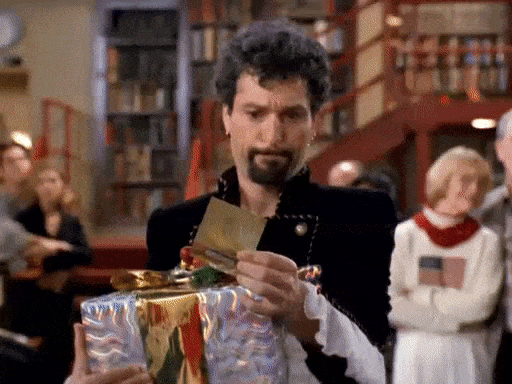
I could bring up the character's live-action appearances (which are notable in their own right), but those are mostly afraid to really go for it. The closest to the original character would be Michael J. Pollard's version in Superboy, a mostly forgotten series from the late'80s, and a version that actually wears the comic book outfit. There's also the Supergirl version, which was notable, and played by Peter Gadiot and Thomas Lemmon; and there's the version played by Howie Mandel (yes, really) in Lois and Clark: The Adventures of Superman in the '90s, which is a more evil but passable version of the character. Oh, and the Smallville version? Yeah, absolutely doesn't count. If you want a true adaptation for Mxy, you gotta go animated.
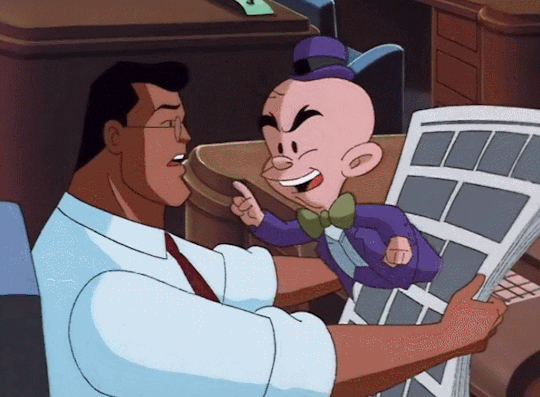
The most iconic adaptation of this character was portrayed by the late, great Gilbert Gottfried in Superman: The Animated Series. Now, I say the most iconic, but that's probably a bit biased on my part. In my opinion, this is the most fun and accurate version we've seen of the character, taking from his original design for inspiration. An annoying imp that appears every three months, his debut episode in the series, Mxyzpixillated, is one of my favorite episodes of the series, and goes balls-to-the-wall wacky, as you should with Mxyzptlk.
The character had only a few more appearances in the series after his first, but Gottfried's performance was so memorable, he was brought back for multiple incarnations, including the video game DC Universe Online, and the more recent animated series Justice League Action, which would be one of Gottfried's last performances, and therefore his last appearance as the character. He'll be sorely missed for a number of reasons, but the voice he gave to the imp is never going to leave me.
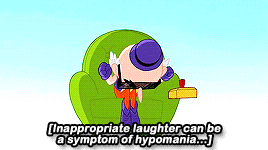
Which brings me to the version of the character we see in MAWS. And yeah, this is obviously a VERY different version of the character, appearance-wise. Outside of the orange and purple color scheme and one other exception, this version has no design similarities with any version of Mxyzptlk, and is obviously very anime-inspired, as is the entire series. I mean, for Chrissakes, the title of the episode is a reference to Ouran High School Host Club. They knew what they were doing.

We meet Mxyzptlk in the middle of a heist, and he already shows his power and prowess by tricking Clark immediately. Amongst a bunch of fantastic DCU references, and a lot of multiverse talk, we eventually stumble upon his actual goal: the reclamation of an ancient artifact stolen from him by the League of Lois Lanes. And that artifact is...his hat. THE hat. And lemme tell ya, I was overjoyed to see that stupid little bowler.
Once he gets it, we get a glimpse of true Mxyzptlk power, as he goes full chaos lord on us. He's eventually defeated through trickery with portals, and NOT through the backwards name gambit. And even then, he's not actually defeated, and returns in the end to annoy his new target: Lois Lane. Yeah. He's haunting LOIS, not Clark. And honestly, I'm...very intrigued.

This Mxyzptlk is, honestly, a faithful version of the character, straight-up. Sure, there are elements missing, and the outfit is completely different, but he also sort of looks like you'd expect an imp or genie to look. Like Alan Moore said in Whatever Happened to the Man of Steel?, why should an extradimensional imp look like a little man in a suit and funny little bowler? I think this works, honestly.
I'm also excited to see him in the future of the series, and see what they do with the character as a result. Mxyzptlk is, as I said earlier, one of my favorites, whether he helps or hurts the Man of Tomorrow. And if I had one complaint, it's that I want him to go wackier. Like, CRAZY. Watch his appearances in Superman: The Animated Series if you haven't, and you'll see what I mean. The potential is quite literally unlimited when it comes to the fifth dimension imp.
But if that's the case...what would I do with Mxyzptlk in my DCCU?

Mr. Mxyzptlk in My DCCU
I would do...not much more than Easter eggs at first. Look, I love Mxyzptlk, but having him as a character in a film or film series is extremely tricky. But instead, Mxyzptlk is both a seen and unseen force in my DCCU, hovering around Superman's world without actually interfering in it directly. Not exactly his bag, I know, but it's a good way to get him to work in a film series. Essentially, I'm turning him into a background character in the first and second films, to be noticed by only the most observant. Disguised as other characters, maybe making odd gestures every now and then as if to manipulate things around him. The ultimate Easter egg character, basically. Until, possibly the very end of the second, or even the third film in the franchise.
Fast forward to the second film's post-credit scene.
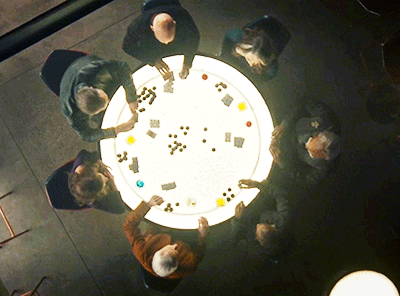
A poker game is being played, but we're table level. All we see are the hands and the cards, which get increasingly stranger as the game goes on. Three voices are speaking, and we get the immediate idea that these people are watching our heroes. Eventually, a fourth voice juts in, and we also find out that a fifth one of them has been invited, but chose not to attend. Finally, we pan up, and we see...some dude.
This guy, whoever they are, should've been a face we've seen in the first and second films, usually hanging around the Daily Planet, but also around Metropolis. In fact, they should be visible in every conflict or battle seen in the films thus far. As we look at the others, we should see similar figures that've appeared in Batman, Wonder Woman, and Flash films that've come put by this point. All extras, and all watching our heroes. In fact, it'd be great if the Flash-focused person hasn't appeared yet, because the Flash's film releases after this one.
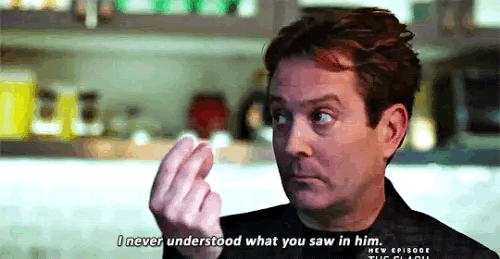
Finally, as we pan back around to the Superman-focused character, who is smoking a cigar, the conversation turns to what's coming. Mxyzptlk is aware of what's coming for Superman, but the rest refer to "the first Crisis". Mxyzptlk sort of brushes it off, even as they're saying things that hint at the first big even film to come in the DCCU. And these should be vague yet intriguing clues to this event. But Mxyzptlk insists that his guy'll be prepared, and that he has a lot of money riding on that outcome. With that, the mysterious figure looks directly at the camera.

Yeah, realizing that we're peering in on the game, he probably berates the nerds in the audience for knowing who he is without it being said (possibly by turning into a more comic-accurate version of himself) , then confirms that he'll be back in the next one, but not as the big threat. Maybe he'll be there to help, maybe not; depends on his mood that day. After a few more snarky remarks, he gives us a look and tells us to buzz off. We may even get a glimpse at the other imps in the room, those being Bat-Mite, Wondermite, and Mopee. And with that, he snaps his fingers, and the film ends officially.
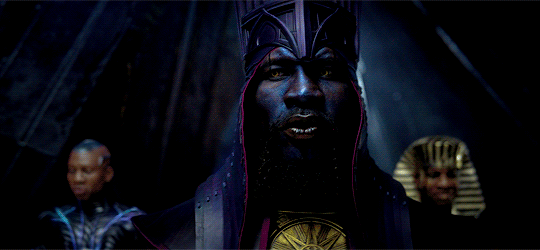
Yeah, I basically pulled an Ant-Man and the Wasp: Quantumania to bring in Mxyzptlk. And, since that scene is one of the best of the film, I don't think that's a problem! In the next film, we know what Mxyzptlk's identity looks like, and he may even give us a wave from the background in his first appearance in the next film. He won't interfere directly, but in the last post-credits scene of this trilogy, he'll finally get caught by Superman. Over time, Superman's had some experience with magic users, probably via Wonder Woman. And magic, in my universe, has a distinctive smell of some kind.
Knowing that Mxyzptlk's been watching him throughout the films, Clark finally confronts him on it, and asks what he wants. And Mxyzptlk actually replies and shows himself, explaining that the battles to come are pretty intense. He won't help or harm, but he just wanted to give a heads-up, mostly because it's fun. With that and a bit more conversation, Mxyzptlk leaves having given this ominous warning.
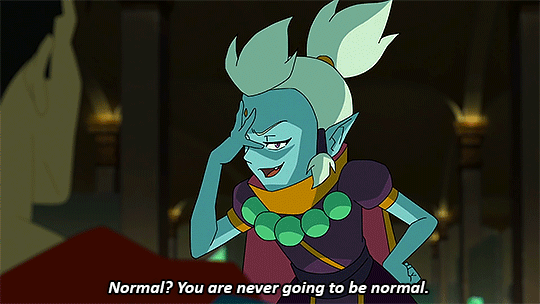
Does he return? Maybe during a Crisis on Infinite Earths movie, maybe in the Darkseid-based Justice League film to come, who knows? This version of the character is basically a Watcher, maybe throwing in some fun chaos here and there. It's sort of hard to add Mxyzptlk into a film series, because he's not a plotter. He's an all-powerful one-off character who, were he to be introduced as a genuine threat to the films, could just kill Superman immediately. It wouldn't make sense. So, make him neutrally bent, and keep him as a fun Easter egg character.
That take may be disappointing to some, but...like, c'mon, guys, he's a pretty big gun. Having him as the ultimate threat of a film also wouldn't make it very fun, because we don't want to see him get killed, but he also can't really win. It'd just be unsatisfying. I like the idea of making him this greater, scarier presence, while also making all of the imps these all-powerful observant beings that watch over our plane with fascination and/or reverence. And maybe, just maybe, we can squeeze some mischief in there somewhere.
Any other ideas on how you would introduce Mr. Mxyzptlk to a cinematic universe (if you should at all)? Reblog! Comment! I'm extremely curious, frankly. This was one of, like, three ideas I had, but the one I thought worked best.
And if you liked this, check out my other Superman essays here!
#dc#dc comics#dccu#my dccu#my dcu#dc cinematic universe#dc universe#maws#my adventures with superman#mr. mxyzptlk#mxyzptlk#mr mxyzptlk#maws tv#maws spoilers#maws mr. mxyzptlk#film essay#character essay#character discussion#kiss kiss fall in portal#maws episode 7
34 notes
·
View notes
Text
I tapped on this film essay out of love for Sam Raimi's Spider-Man; I left with a reinvigorated passion for storytelling. Thank you 🥹❤️
youtube
@miss-andromeda @android-cap-007 @happymoonangel
6 notes
·
View notes
Text
When you did your finals on a Markiplier production
Your local film student had just finished a semester of Critical Study of Film. Yes, I know the name sounds generic. Prof said that on the first day and it will change. We discussed all sorts of things in class like control societies in The Truman Show and the heterotopia in Squid Game, as well as the abject in almost everything since that is prof's specialty. To be fair, I would talk about the abject in every film I watched for hours too.
For our final, my group and I did a presentation and essay on Interactive Films. Of course, I covered A Heist with Markiplier. I want to share with you guys and @markiplier himself (hopefully he sees this) the project. I will update prof's grading later.
Presentation: https://docs.google.com/presentation/d/1hfAtxTIZuO-HIYOLnrHG7sTMJL0Owp1pcWefw4IjTg4/edit?usp=sharing
Essay: https://docs.google.com/document/d/1Ik4zcPX7fw9xbpKH2-n_t75wg2R21HN4CH_mxwkndbw/edit?usp=sharing
Let me know if the link doesn't work.
ps. forgot to mention each of our essays were supposed to be ~ 2.5k words so it will be a long read but it's worth it
#markiplier#a heist with markiplier#ahwm#film student#film studies#film analysis#interactive films#film essay#prof is Korean so that one time someone asked if the squid game is a real children's game and he confirmed he had played it#sorry if the conclusion paragraph sounds awkward I was busy watching the gayest olympics in Europe and totally did not rush that#wondering if my classmates will find me here or not#at least I'm proud of myself for doing it
50 notes
·
View notes
Text
youtube
Nerdstalgic x "How Two Iconic Directors Handled the Same War".
Christopher Nolan and Hayao Miyazaki are two filmmakers that work under the unifying theme of obsession. Though Oppenheimer and The Wind Rises were released almost 10 years apart, the themes of war, obsession, and consequence run through both films.
#video#oppenheimer#the wind rises#nerdstalgic#film essay#video essay#film#movies#cinema#hayao miyazaki#miyazaki#studio ghibli#wwii#world war 2#ww2#pacific war#christopher nolan#anime#ghibli#studio ghilibi#animated#war#hoyte van hoytema
8 notes
·
View notes
Text
"Did I really dream the film before I saw it? The pragmatic answer is that I must have unwittingly caught a glimpse of The Night of the Hunter as a child in the 70s. We didn't have a colour telly until 1981 (for Charles and Diana's wedding, no less), so this black-and-white film, released most unfashionably during the new age of 50s Technicolor, perhaps hit a key part of my subconscious.
I know films can induce deja vu, but is it just an illusion or can we find a narrative familiar because it is so skilfully portrayed, so fundamental to our psyche, and so profoundly scares and comforts us? The Night of the Hunter still haunts me, and to this day I am not sure if I pursued it in the normal way, or if on some deeper, unknown level – like the forces of good and evil it evokes – it has been stalking me all along."
--Peter Kimpton, My Favorite Film: The Night of the Hunter at The Guardian
#peter kimpton#night of the hunter#robert mitchum#horror#cinema#op#film criticism#film essay#charles laughton
27 notes
·
View notes
Photo



Hey, gang! I'm over on the Drunk Monkeys literary journal talking about the merits of Elvis Presley's films for their special 2023 Pop Culture issue. Go check it out!
#elvis presley#elvis#elvis cinema#drunk monkeys#film essay#pop culture#mine#u can reblog#whew i hope this is readable#wrote this a couple months back but hopefully it still holds up! im so glad its finally getting published :')
24 notes
·
View notes
Photo

LA CINÉASTE will be streaming all episodes in our new Vimeo showcase titled, “REFLECTIONS ON ARTHOUSE CINEMA”
What is our “REFLECTIONS ON ARTHOUSE CINEMA” showcase?
A collection of episodic video essays relating to Arthouse cinema, film history, experimental filmmakers, and a focus on the global realities of film movements across generations.
Start streaming here!
Visit our Vimeo Channel
LA CINÉASTE provides additional content and research materials via our Patreon. We encourage followers, scholars, and those interested in our mission to become a part of our Patreon community.
Visit our Patreon
#LA CINÉASTE#vimeo#arthouse cinema#vimeo showcase#new iranian cinema#Sundance Film Festival#sundance 1992#patreon support#film essay#video essay#film#arthouse film#independent cinema#documentary filmmaking#Dariush Mehrjui#Forugh Farrokhzad#Abbas Kiarostami#jafar panahi#new queer cinema#paris is burning#gregg araki#cheryl dunye#Queer Cinema#LGBTQ cinema#film community#filmmakers#cinematography
59 notes
·
View notes
Text
first essay up in a minute about one of my favorite filmmakers and all round mother, Sofia Coppola and her influence on the new digital age ‘girl’ as well as her own expressions of Girlhood. pls subscribe to my Substack!
#sofia coppola#girlhood#girling#girl math#lick the star 1998#the virgin suicides#marie antoniette 2006#coppola girls#substack#film essay#film analysis#flowers in the attic#jeffrey eugenides
12 notes
·
View notes
Text
The Barbie Movie
Please indulge my thoughts as I post this. I wrote this on the bus on my way to work after seeing the Barbie movie. I'm so normal about this.
------------------------------------------------------------
There is no further proof needed for the Barbie movie being about the female experience and role reversal than my friend and I holding each other's hand while we sob during the last five minutes as her boyfriend watches the screen with a single tear running down his face. The three of us sit in the screen room for ten minutes after the movie ended, listening to Billie Eilish sing devastating lyrics as we sit in silence.
After we leave the screening, she goes to the toilet and her boyfriend turns to me and says "This may be in poor taste after the movie we just watched but- am I the problem?" And I have no answer for him other than. I don't know.
We talk about the movie for hours after; in the car as her mum drives, at the bar as we sip on sparkling water. And we still don't know why we felt the way we did. We don't know why the tears came or why we laughed or why we felt unbearably uncomfortable at the guitar scene.
I feel like this movie is something that everyone can relate to. Whether you are a young girl who plays with Barbie's too hard, a young woman who feels like she can't live as herself or a young man whose self worth is based on others opinions. Because it's a story of human experience; of what it means to live instead of just survive, to be happy instead of complacent.
In a way, I think all three of us were impacted by the movie differently because we are all different. Which is a given, but that's the glory of the Barbie movie. While coated in pink and glitter, it's a story of being a woman in the real world but it's explained in a way that makes it feel closer to your heart. Seeing plastic explain the discomfort of walking down a street, of being catcalled, of being disappointed and hurt somehow made me think of my young teenage years. That little girl who didn't understand how other people could be so mean, the little girl who only wanted to dress prettily without being shamed, the little girl who lived in fear of being scorned for simply being. She watched the screen from behind my eyes and understood.
I am not loved unless I'm admired. I'm not worthy if I am not loved. I am not loved unless I am someone's plaything. In that sense, I am Ken.
I am not good if I am not stable. I am not confident unless I am looked upon as pretty. I am not pretty if I am not skinny. In that sense I am Gloria.
I am not perfect if I am not what I was made for. I am not complete if I am not exactly the way I was intended to be. I am not happy unless everything I love stays the same. In that sense I am Barbie.
Being human is seeing the beauty in the normal. Being human is understanding that not everyone is the same and loving each other regardless. Being human is feeling. Feeling loved, feeling sad, feeling better now than you did before.
And I think that's one of the messages that Greta Gerwig was trying to broadcast: that you are more than what you were made for. You are more than just a mother, more than just an accessory, more than a Barbie or a Ken.
You are something you wait for. You are something worthy of love and adoration from your peers. You are equal to everyone around you. You are Kenough.
#the barbie movie#barbie#film essay#opinion#not mcyt#greta gerwig#ryan gosling#margot robbie#margot barbie#films#character analysis
9 notes
·
View notes
Text
youtube
The Horror of Ambiguity | The Nerdwriter
10 notes
·
View notes
Text
55 years of George A. Romero’s political horror masterpiece Night of the Living Dead
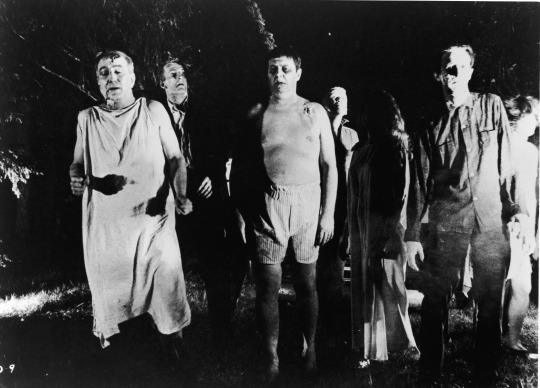
Starring Duane Jones and Judith O’Dea in one of horror’s most acclaimed scripts, George A. Romero’s Night of the Living Dead, released 55 years ago as the filmmaker’s first feature-length film, still holds up as a chilling, entertaining grizzly and layered zombie horror classic. Co-written between the director and famed screenwriter John Russo, Night of the Living Dead focuses on a town’s desperate attempts at survival after a never ending sea of Undead ghouls rise from their graves due to radiation brutish attack. The townsfolk don’t know why the dead are leaving their graves or if or when they’ll go back. All they know is the ghouls want to feast on their flesh and bites can transfer the ghoulish state.
Romero’s work is credited as the first modern onscreen depiction of the now cliched zombie trope even though the film never directly refers to the creatures as that once. Additionally, the classic script drew minor influences from Richard Matheson’s 1954 prose I am Legend in its depiction of a nightmarish disease infecting and decaying a civilised society that was also influential in the zombie apocalypse style. “I thought I Am Legend was about revolution. I said if you’re going to do something about revolution, you should start at the beginning. I mean, Richard starts his book with one man left; everybody in the world has become a vampire,” Romero told Cinema Blend in 2008. “I said we got to start at the beginning and tweak it up a little bit. I couldn’t use vampires because he did, so I wanted something that would be an earth-shaking change.”
He added: “Something that was forever, something that was really at the heart of it. I said, So what if the dead stop staying dead? … And the stories are about how people respond or fail to respond to this. That’s really all [the zombies] ever represented to me. In Richard’s book, in the original I Am Legend, that’s what I thought that book was about. There’s this global change and there’s one guy holding out saying, wait a minute, I’m still a human. He’s wrong. Go ahead. Join them. You’ll live forever! In a certain sense he’s wrong but on the other hand, you’ve got to respect him for taking that position”
Romero’s interpretation of a growing story was made under a budget of $114,000 and was able to gross a total of $30,236,452 worldwide through word of mouth broadcasting its blend of suffocating suspense and stomach-churning carnage. Night of the Living Dead persevered against initial controversy and negative reviews that focused heavily on its explicit violence and gore, refusing to see its artistic and contextual potential, to earn a cult following who did recognise these underlying properties and become one of horror’s greatest and most influential. Romero’s work has also established a prosperous franchise, comprising five sequels that were released between 1978 and 2009, all of which were directed by Romero and an authorised 1990 remake of the original alongside numerous unofficial re-tellings due to the work’s public domain.
Night of the Living Dead utilised its stark black-and-white cinematography, attentive mise-en-scene suspenseful narrative and engaging performances to create a milestone in horror filmmaking. Furthermore, Romero’s direction, despite seemingly working on a gory tale of people being eaten alive, actually commented on the social and cultural developments that were taking the 1960's by storm and this is reflected in the concept of people being hunted by cannibalistic ghouls. The Undead reflect the new generation flourishing with progress and openness and the victims are the older who are restricted by tradition. During Bravo’s 2004 miniseries 100 Scariest Movie Moments, Romero instructed viewers to think of the ghouls as the “new generation devouring the old” in a symbolic sense of cleansing the past with merciless force to seek out something extremely new and different. This coded meaning is evident in the terrifying “feast” sequence which sees the ghouls devour the flesh and organs of one of the character’s charred corpses in a car. Romero’s camera focuses on wide shots to capture the group of ghouls approaching the car and tearing the body apart, before tightening into close-ups of individual ghouls feasting on body parts to accentuate the gruesome horror. This is the exact gore that shocked audiences in 1968 and it’s understandable, given the blunt presentations of internal organs being pulled out of a dead body to be eaten on the spot. However, this carnage can easily be interpreted as a metaphor for the conflict between ideology in generations and the disastrous aftermaths of nuclear action as radiation is the cause for this blood bath.
Night of the Living Dead earned historic status in casting a black male, Jones’s Ben, as his courageous and resourceful protagonist, something nearly unheard of by ’60s standards and further illustrates the feature’s concepts of and push for change. Ben is a true horror hero; headstrong, observant, ambitious and willing to fight till the end. Such a presentation of a black character was considered controversial by 1968’s standards due to bigotry and the film was subsequently linked to the Civil Rights movement. Romero told Bravo that the night he finished filming the project and began driving down to producers, he heard on the radio news that activist Martin Luther King Jnr had been assassinated, a chilling echo of Ben’s unfortunate demise in the film’s conclusion at the hands of rednecks who mistake him for a ghoul. Writing for CineAction in 2018, writer Mark Lager commented that the “connection between Ben’s demise and the racial violence besetting the Civil Rights Movement was all too clear. Night of the Living Dead (a low-budget horror film) had dissected American society in the 1960s more truthfully and unapologetically than any mainstream Hollywood movie.” However, the director was persistent that he did not consider race when casting his protagonist or any of his characters. Instead, he simply cast the actor who impressed him the most during auditions.
A bleak and nihilistic picture that still manages to garner entertainment for horror lovers, Night of the Living Dead is one of the touchstones in the social thriller, something now explored by modern filmmakers such as Jordan Peele. It’s a timeless and unforgettable piece that has allowed several original areas of the genre to take flight.
youtube
#night of the living dead#horror#horror movies#george a romero#zombies#halloween#spooky season#film critic#film criticism#film analysis#film essay#Youtube
4 notes
·
View notes
Text
So I watched Avatar for the first time (I know, catch up already, amirite) and...
Hoo boy...
Where do I even start.
Don't get me wrong, it's a beautiful movie. It's a set right out of the deepest pits of my imagination; it hits all the positives of fantastical sci-fi with a subtle backdrop of dystopia. The Na'vi serve a beautiful fantasy down-to-earth element while humanity portrays a message of technological takeover. And we must remember that 2009, hell, basically anything pre-2016 or so, didn't often have open political messages, especially a message about white colonization of the indigenous.
But.
And it's a big but(t)
(couldn't help myself sorry)
It's only great up until, like, the last 50 minutes or so? I think you know what I'm talking about. It's a nice story about a people coming together to face the imminent threat. But it's a fucking native vs colonizers story with a goddamn white savior. What did Jake even do to actually earn their respect? Sure, the Eywa chose him and all that, but what the fuck does that even mean? It literally gives "eh, the natives weren't good enough so I blessed this white man instead."
(dropping in a point here to remind you that it isn't just because Jake is a white man, it's that he's a man at all and not a Na'vi native).
It's not a good look for James Cameron.
Wanna become native? Uhhhh.... just dress like them for a couple months, learn about 5 sentences of their language, and have sex basically in front of a shrine to their goddess.
It's...
It's just dang icky.
The story would have been easily a thousand times better had they had Neytiri (AKA the beautiful Zoe Saldana, a black woman and Na'vi native in the film) the true hero and Jake as... basically a kind of collateral damage. Maybe his former marine and informant status could've ended up inspiring her with ideas for war tactics or something. And shit, it would've been such a sick fucking plot twist for the hero of the first half to suddenly become lowkey redundant because he isn't a goddamn native; they have zero reason to trust him. I mean, this asshole literally fucked the fiancé of the future clan leader! And he faces no consequences! It's giving Anakin Skywalker massacring children and being rewarded with marriage.
And it wouldn't make him any less of a main character.
He would still be a hero, just not the hero.
And then, ONLY THEN, once they've won, do they truly accept Jake as clan. As brother.
Imagine it: Jake tries to rally the forces of Pandora and... it doesn't work. Failure is upon them. It all looks hopeless. And then Neytiri, renewed with hope and a heart aching for revenge, steps up. And it's her that delivers the powerful speeches that inspire the clans because she is their sister, not some guy who's only been around for three fucking months.
But hey, what do I know?
#avatar#james cameron avatar#na'vi#film discussion#avatar critical#film essay#watching Avatar 2 next and my hopes are NOT high#colonialism#messages in film#movie review#movie essay#ffs james cameron stick to the cgi#let someone else handle the plot#science fiction#pandora be pretty tho#gonna drop in a sneaky#fuck anakin skywalker#anti anakin skywalker
12 notes
·
View notes
Text
Breaking Down the Bold Finale: Why Promising Young Woman Nailed It
Hey, fellow film lovers! Promising Young Woman (2020) is one of my all-time favourite movies and for good reason. It discusses important topics about society and femininity.
Let’s dive into the jaw-dropping finale of Promising Young Woman. Buckle up for a chat about film theory and why that ending is a knockout.
Feminist Film Theory: Power to Cassie
In the realm of feminist film theory, Cassie is our unapologetic protagonist. She emerges as an avenging hero, shattering the conventional narrative. The ending? It had to be bold, reflecting Cassie’s relentless pursuit of justice.
Cassie, portrayed with depth by Carey Mulligan, challenges the typical female character arc. The tension and power dynamics unfold in scenes where she confronts her targets.
The ending becomes a powerful statement. It breaks away from traditional gender norms. The ending also offers a fresh perspective on justice in the face of sexual assault.
Genre Deconstruction: Twisty Turmoil
Now, let’s talk about genre deconstruction. Promising Young Woman begins as a dark comedy. Before long, it morphs into a thrilling tragedy. Why? To keep us on our toes. The ending is unconventional because life itself is messy, and so is this story.
The film’s ability to blend dark comedy with thriller and tragedy is intentional. Shaking up genre expectations makes us question our assumptions about justice and morality. The ending isn’t neatly packaged, but a deliberate departure from the expected.
Visual Language: Colors Speak Louder
Have you noticed those dreamy pastel colours during Cassie’s confrontations? These pallets act as eye candy AND visual storytelling. The ending needed to be a spectacle.
The filmmakers used colours to challenge societal perceptions and scream empowerment. Pastel colours in confrontation scenes add layers of irony. The pallet challenges traditional notions of femininity.
This visual language enhances our understanding of the film’s themes. It adds depth to the ending, making it an interplay of satisfaction AND discomfort.
Dialogue as Subtext: The Unsaid Speaks Volumes
Cassie’s exchanges, especially with characters like Ryan, are dripping with subtext. The coffee shop confrontation? It’s a dialogue masterpiece, wrapping up Cassie’s journey with emotional weight.
Film theory teaches us that dialogue isn’t just about words. It’s also a hidden treasure trove of meaning. We can especially focus on lines leading to the film’s climax.
Let’s talk about THAT line in one of the ending scenes, where Cassie shows up as Candy.
Al Monroe: It’s every man’s worst nightmare, getting accused of something like that.
Cassie: Can you guess what every woman’s worst nightmare is?
Now that’s a kicker.
Al Monroe, played by Chris Lowell, reveals a common sentiment among men. He expresses fear at the thought of a woman accusing him of a heinous act.
Cassie’s retort brings the film’s feminist themes to the forefront. It challenges Al and, by extension, the audience.
Men may fear false accusations, but women live with the constant threat of sexual assault. They face the fear of no one believing them or taking them seriously.
Cassie’s response is a stark reminder of the gendered nature of societal fears. Her line put a spotlight on the systemic issues surrounding sexual assault. These types of lines prompt viewers to confront the disparity in societal expectations.
Cassie’s question is a rhetorical challenge, urging the audience to reconsider their ideas. The line encourages the viewers to empathise with the lived experiences of women. This dialogue lingers, forcing viewers to confront uncomfortable truths about sexual assault.
Catharsis and Disquiet: Emotional Rollercoaster
As we approach the finale, that mix of satisfaction and disquiet isn’t accidental. Film theory says it’s purposeful. The ending brings catharsis, a release, but it also nudges us to question more. It’s a rollercoaster designed to make us think.
The emotional impact of the ending is intentional. It prompts us to reflect on our own expectations and biases. The ending pushes us to confront uncomfortable truths about justice and societal expectations.
The film doesn’t spoon-feed us a tidy resolution. Instead, it leaves us with a cocktail of emotions. It sparks conversations long after the credits roll.
A Cinematic Rebellion
In a nutshell, Promising Young Woman chose its ending for a reason. Feminist film theory empowered Cassie. Genre deconstruction kept us guessing. The visual language uses colours to challenge norms. Dialogue spoke volumes.
The ending delivered catharsis and disquiet, leaving us with thoughts to ponder. This film isn’t just a movie. Promising Young Woman is a conversation starter. This film challenges norms and sparks discussions about justice and revenge for women.
That’s why the ending had to be a spectacle.
Promising Young Woman shows a cinematic rebellion against the norm. Through feminist film theory, genre deconstruction, visual language, and dialogue analysis, the film crafts an ending as bold as its protagonist.
#my writing#creativepotatowrites#writeblr#promising young woman#promisingyoungwoman#filmblog#filmessay#movie#film blog#film essay#feminism#feminist theory#film theory
2 notes
·
View notes
Text
Renfield
My dumb little gay brain has hyper fixated on this upcoming vampire film so I wanted to talk about it. Really long post under the cut, so read on at your own risk 👍👍👍
So Renfield is this movie about Dracula’s minion, Renfield, and I got really excited about it when I saw the trailer. I’ll probably still go see the movie, the aesthetic is cool and I like the colors, but based on that trailer, I had an understanding of the plot that did not pan out. Maybe I’m wrong and the advertisement was misleading, but as I’m aware of it, the plot goes like this:
Renfield is your average guy, save for one thing: he works for the narcissistic Lord of Evil, Dracula, who I think serves as a literal representation of his low self-esteem and self-worth. To help alleviate this problem, he goes to a toxic relationship counseling group, who see his panicked rambling about his boss’s powers as hyperbole. His job is to bring Dracula people to eat, and, in exchange, (by eating spiders??? I think???) he gains superhuman strength and agility. But Dracula treats him terribly, and he’s looking to get out of their bargain. He, at some point, saves a bunch of people, and teams up with a police officer lady to an unknown degree. I assume the movie will end with him defeating Dracula, symbolizing him overcoming his mental struggles and finding peace.
Now, I thought this movie was gay. Perhaps that’s my gaggles (gay goggles) talking, but given that he goes to relationship counseling, the bizarre intimacy shown in the promotional material, as well as my inkling that it would have its romantic/sexual undertones addressed narratively if either Dracula or Renfield was a woman, I think it’s justified. So my first thought was, “Cool! Gay vampire action movie with Nick Cage!” And then I thought, “Oh, not gay vampire action movie with Awkwafina.” And some of my initial enthusiasm dipped. But I figured, “I can’t’ve been the only one who caught on to these subtleties, right?” So, to the Internet I went.
Come to find out, almost everyone saw the very homoerotic subtext between the dominating evil fancy man and his submissive good-hearted henchperson.
Of course, some certain corners of the Internet, such as Pinterest, Tumblr, and Ao3 are perhaps a bit hardwired to see two men in close proximity and diagnose them with gay, but I think that says more about how writers write these characters, and less about how the fans see them. Since straight relationships are largely unappealing (read: unhealthy and possessive) as portrayed in modern media, and a majority of characters with speaking lines and interactions are male, gay pairings are an essential part of the shipping conversation. The top ten pairings in Ao3 fanfiction are all between two guys, for Pete’s sake.
So why aren’t canonical gay relationships more common? The obvious answer is, obviously, the aggressive heterosexuality of Hollywood, action movies in particular. Sometimes it seems like hetero romance is a quota to fill, as if while making these movies, they thought, “We have to make these to opposite-gendered characters kiss,” with very little reasoning or logic behind it. And even if a straight romance is given buildup and payoff, it seems that many writers are uninterested in actually writing about two people in love, beyond the falling in. (The Thor movies are actually a great example of this, as the relationship between Jane Foster and Thor in the first movie is a pretty well-written one. But then they’ve broken up in the second film, Jane isn’t in the third one, and then she dies.) Indiana Jones has three different love interests for three straight movies, Maverick gets back with Penny in Top Gun 2 for literally no good reason, and Endgame ends with Captain America having gone back and inadvertently removed Peggy’s agency to get his romantic ending. In my opinion, straight romances are largely superficial, not impacting plot or characters in meaningful enough ways to be included.
And that’s, I think, at the heart of why I can’t stand romantic subplots in action movies. Their superficially and toxic insanity. I can count on two hands the amount of movies with enjoyable and well-progressed romantic subplots. (Howl’s Moving Castle, Shrek, and Tangled come to mind, though that might be my animation bias showing.) It feels tacked on. Cheap. Unimportant. It’s hard to get invested into when the characters are so… not interesting. And when it’s not boring me to tears, it’s making me question the sanity of whoever signed off on it.
For an excellent comparison, look at the 1999 and 2017 Mummy movies. In the ‘99 film, Rick and Evie’s romance couldn’t be removed without substantial changes to the narrative. They positively drive each other’s development. Rick by feeding into Evie’s more outgoing and adventurous tendencies, and Evie by driving Rick to be more open and compassionate. They’re totally focused on each other, and time is given to developing their relationship naturally. It also provides a good foil against the villain, Imhotep, who was destroyed not once, but twice by his obsession with Anck-su-Namun.
But the 2017 version has one of the most heterosexual stories I’ve ever seen in an action film. The protagonist, Nick, has two love interests, the paranoid researcher Jennifer, and the mummy herself, Ahmanet. He’s linked to Ahmanet through some psychic BS, and she wants to marry him. But he also has a past with Jennifer, and ends up sacrificing himself for her. But instead of these relationships serving as juxtaposition, one driven by genuine caring passion, and the other driven by desire and selfishness, one just keeps getting in the way of the other. At the end, neither are developed or compelling. Too much time is spent with Nick bemoaning his ties to Ahmanet to grow into his relationship with Jennifer, and too much time is spent with Nick angsting out with Jennifer to elaborate on his relationship with Ahmanet. And they’re all such boring characters that you can’t even really bring yourself to care.
So, along comes Renfield. A film with the perfect opportunity to structure most, if not all, of its story around a romantic relationship, albeit a failing one. It felt (and still feels) incredibly What We Do In The Shadows, given the poppy neon lighting, dry-humored dialogue, timeless atmosphere, and campy characters. And, above everything else, a lot of very gay subtext. (Of course, What We Do In The Shadows is a lot more overt with the character’s obviously not-straight sexualities.) Because while the common Internet users seem to look at this movie and say, “they’re gay,” the more official, widespread Internet journalists and film critics seem to look at this movie and talk only about how cool it is that not-so-subtle meme king Nicolas Cage is playing a classy-classic tuxedo vampire. (And, don’t get me wrong, I love that too.) Is it the gaggles rearing their homo heads again? Is this just something we’ve read into too deeply?
I don’t think so. Any millennial/ gen-Z consumer of vampire media, excluding maybe the die-hard Edward versus Jacob Twilight fans, is familiar with the homoeroticism that comes with the genre. Carmilla, widely considered the very first vampire novel, is literally about a lesbian romance! The sexual tension between Jonathan Harker and the Count in the first few chapter of Dracula is wild. So much vampire media is queercoded, if not outright gay, so I think assuming a 2023 “modern monster tale” would address or lean into these expectations is reasonable.
(As a side note, whatever Renfield and Dracula’s relationship is, it’s a toxic one. If my assumption is correct and Dracula represents Renfield’s internalized insecurities, that’s a pretty bad basis for a romance. The promo material has made it very clear that Renfield is unhappy with how he is treated by his boss. His journey in the movie is about getting away from that.
Online fandom culture has an unfortunate habit of romanticizing (fetishizing) gay men in toxic relationships. Look no further than the enthusiastic Killing Stalking fan base, who think a psychopathic, unfeeling murderer and an emotionally unstable, abandonment-issue-riddled nervous wreck should be together romantically. Oh, and the murderer kept the nervous wreck locked in his house for months, physically, emotionally, and sexually abusing him, while feeding into his Stockholm-Syndrome mentality. Such a relationship is similar to Dracula and Renfield’s. A lot of this culture stems from teen girls, which I am, and I don’t want to feed into that.)
If Renfield is gay, it has an interesting opportunity to write an extremely interesting queer romance about a gay dude breaking away from his abusive old boss, and perhaps finding new love and comfort in his sexuality. I would suggest the police officer, but, on top of the fact that she would bring it back to the realm of heteronormativity, she’s unfunny and annoying. (Although, her name is Rebecca Quincy, and Quincy P. Morris is the name of the bisexual Texas cowboy himbo from the original Dracula novel.) Oh, well. She’ll probably be his love interest anyway.
It’s possible that I’m just wrong and Renfield will have all this “good queer writing” that I didn’t expect, and this whole essay will be null and void. (I seriously doubt it.) Honestly, though, I’m really just using Renfield as thinly- veiled window dressing for other romantic- adjacent topics that I’ve wanted to organize my thoughts on for a while.
Thanks if you read all this way. Lemme know what your thoughts on stuff like this is.
#long reads#long post#essay#in this essay i will#queer stuff#gay#renfield#renfield movie#queerbaiting#maybe#movie essay#film essay#movie analysis#film analysis#lets hope this doesn’t turn out to be a completely irrelevant essay lmao#my stuff
13 notes
·
View notes